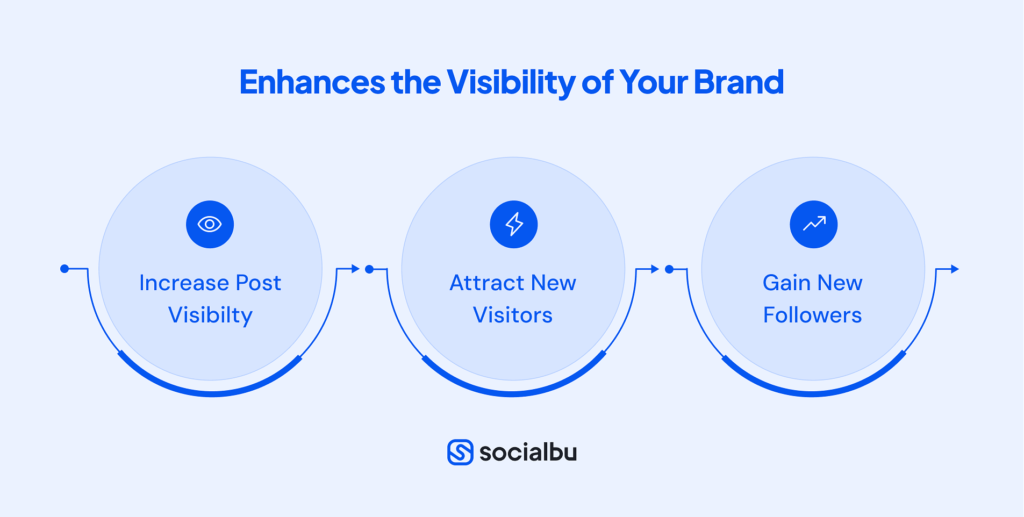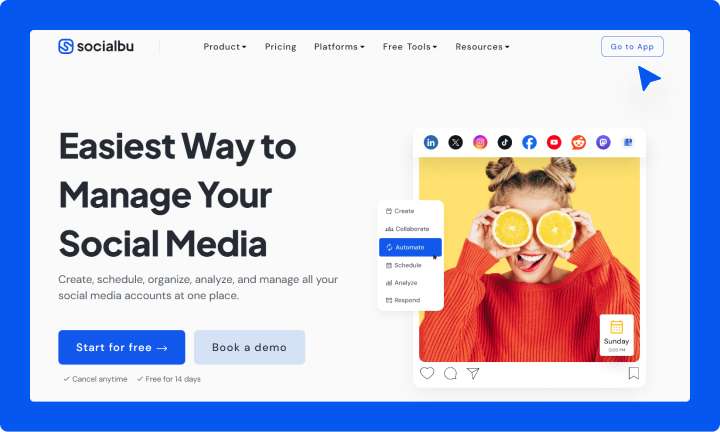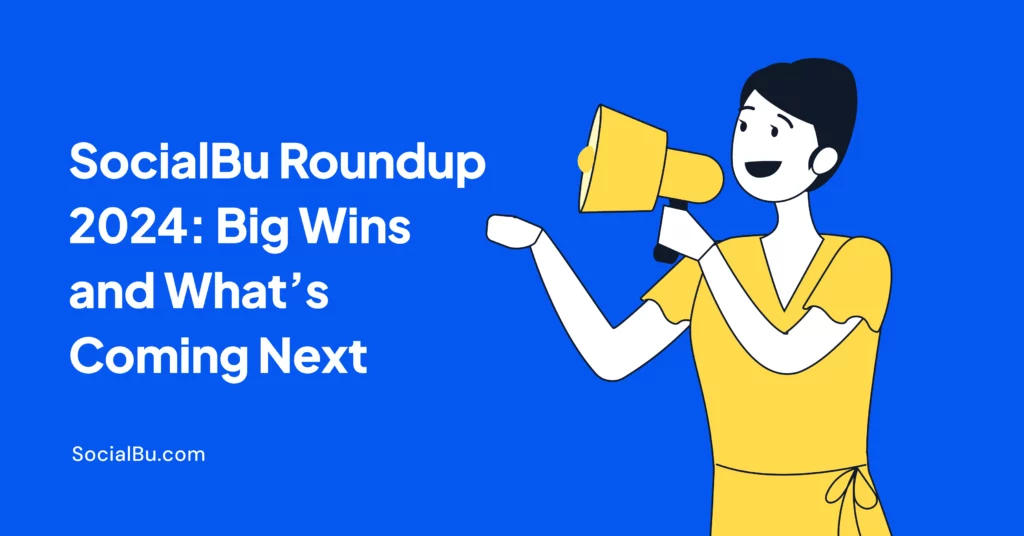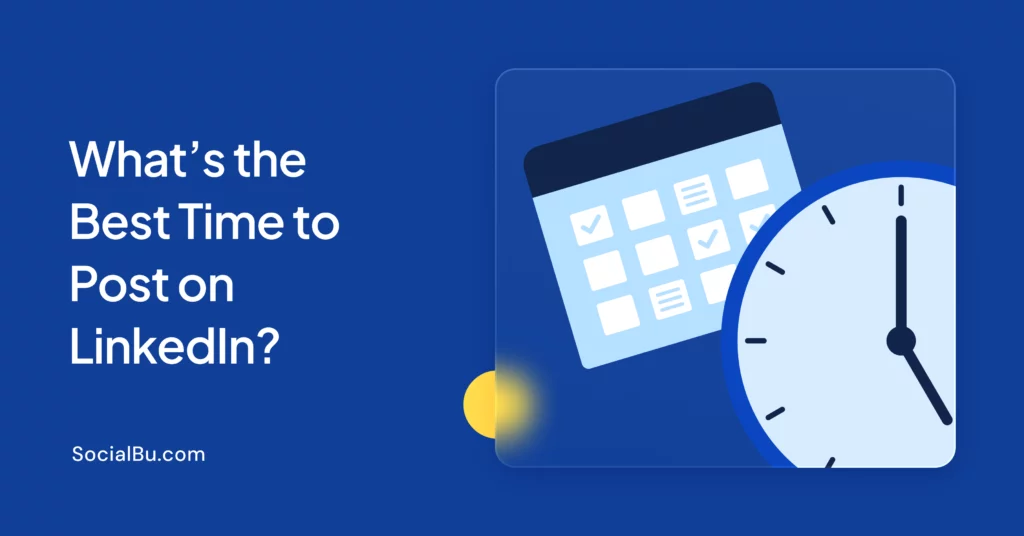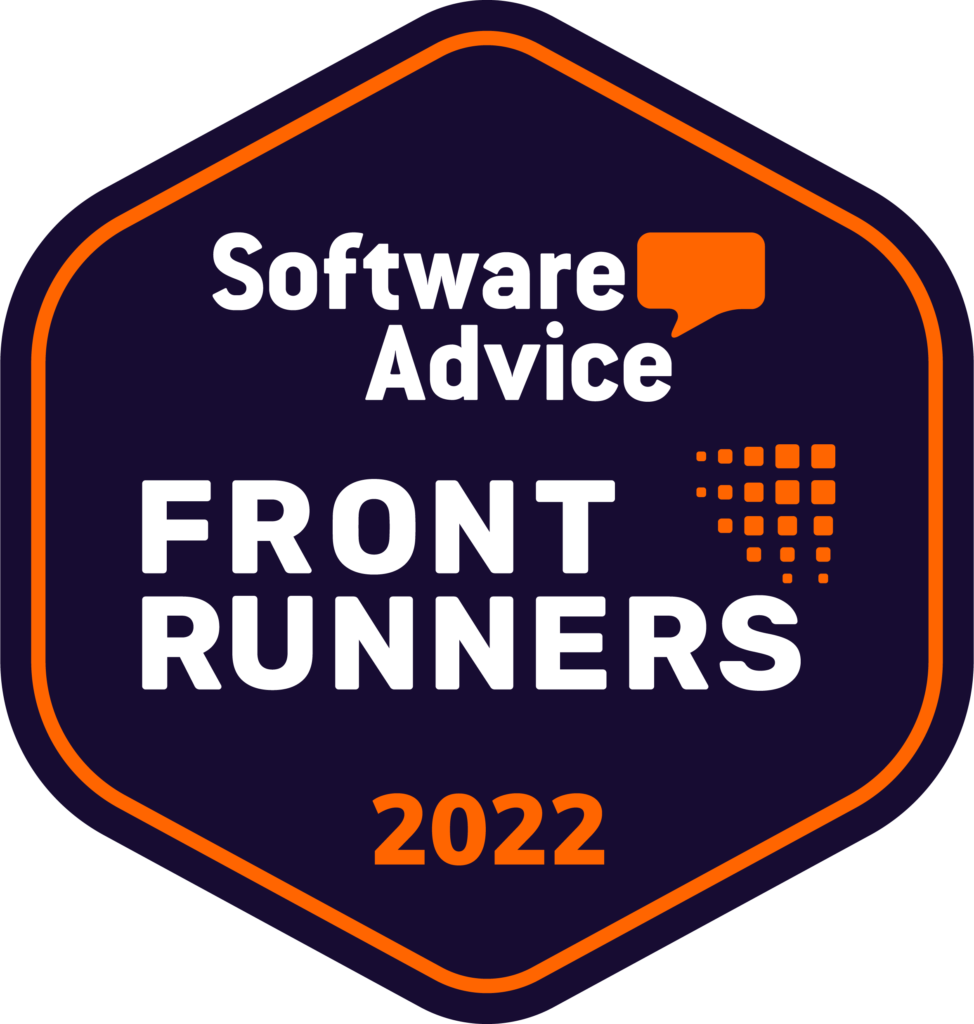Are your posts underperforming, failing to reach the audience you worked hard to attract? Mismanaging tags can stifle your engagement, leaving your content overlooked and irrelevant.
Without the right strategy, even the best content can go unnoticed, losing its ability to connect with the right audience or drive meaningful results.
The right tagging strategy is essential to your social media success in 2025. Tags act as a bridge, connecting your content with an audience actively searching for it. They ensure your posts don’t get lost in the noise of countless updates and allow you to stand out by targeting specific interests, trends, and locations.
This guide will teach you how to use social media tags to increase engagement and ensure your posts reach the right people at the right time.
Let’s go!
The Power of Social Media Tags
Imagine millions of conversations happening online at once. Social media tags (hashtags) act like keywords that help people find these conversations. They categorize content and make it easier for users with similar interests to discover each other.
Here’s what these tags do precisely:
Enhances the Visibility of Your Brand
Hashtags increase the exposure and discoverability of posts. They promote overall brand awareness. When you use relevant and trendy Instagram hashtags, visitors looking for content on those topics will discover your posts. This increases your chances of gaining new followers and, ultimately, consumers.
For example, if you run a restaurant business. You are effectively tagging your material with those keywords by using relevant hashtags like #food and # restaurant in your post.
Increases Engagement
Social media hashtags effectively increase engagement and conversations on platforms such as Instagram. Using relevant hashtags increases engagement with your posts, including likes, comments, and shares.
This greater engagement increases the visibility of your posts and enhances your relationship with your audience, creating a sense of community and loyalty.
However, including spammy, irrelevant, and too many hashtags can negatively impact. That said, choosing content-related hashtags is crucial to reach your target audience.
Adds Additional Context to Your Posts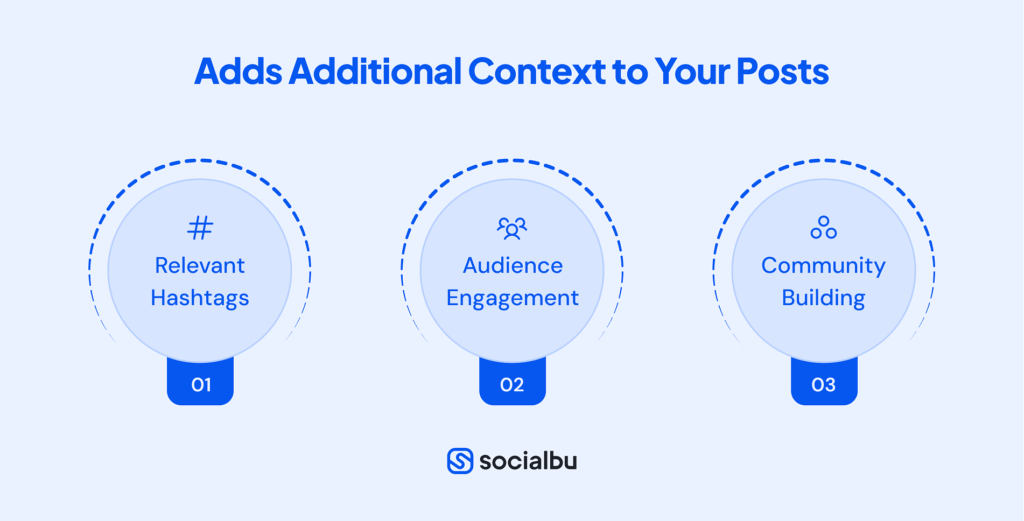
Hashtags link your posts to specific issues or events, making it easier for the audience to follow, associate with, and respond to your content.
For instance, if you want to share a new recipe that you have prepared, using a hashtag such as #recipe, these posts will become searchable and easily distinguishable from posts about food that are not necessarily recipes.
Likewise, if you’re at an event, using the #event hashtag can ensure that your post shows up on other attendees and people who follow that event Online.
Hashtags are also great when sharing creative visuals to provide context without writing extensive text content.
Content Research
By monitoring the reach, impressions, and interactions associated with your chosen hashtags, you can gain vital insights into why your target audience approves of your content.
For example, SEO keyword research can help you discover new content ideas. This data-driven method can also help you improve your hashtag game and optimize your content calendar.
Tips to Leverage Hashtags
Strategic hashtag usage can help you retain the goal of your posts and expand your account. Here are tips on how to use hashtags in social media marketing.
1. Use Relevant Hashtags in Your Social Content
Research hashtags related to your content and target audience. Explore posts in your niche, analyze competitor hashtags, and search for trending and related hashtags on Instagram. A mix of broad and niche hashtags is vital for success. While popular tags can boost your visibility, more targeted ones can help you target a more engaged audience.
Use hashtags that are relevant to or express your message. To figure out roughly how many hashtags you should use, find the best practices of each social site. For example, if you’re a Miami-based clothing brand, consider replacing a broad tag like #clothes with a more targeted one like #miamifashion to attract a more focused following.
2. Create Branded Hashtags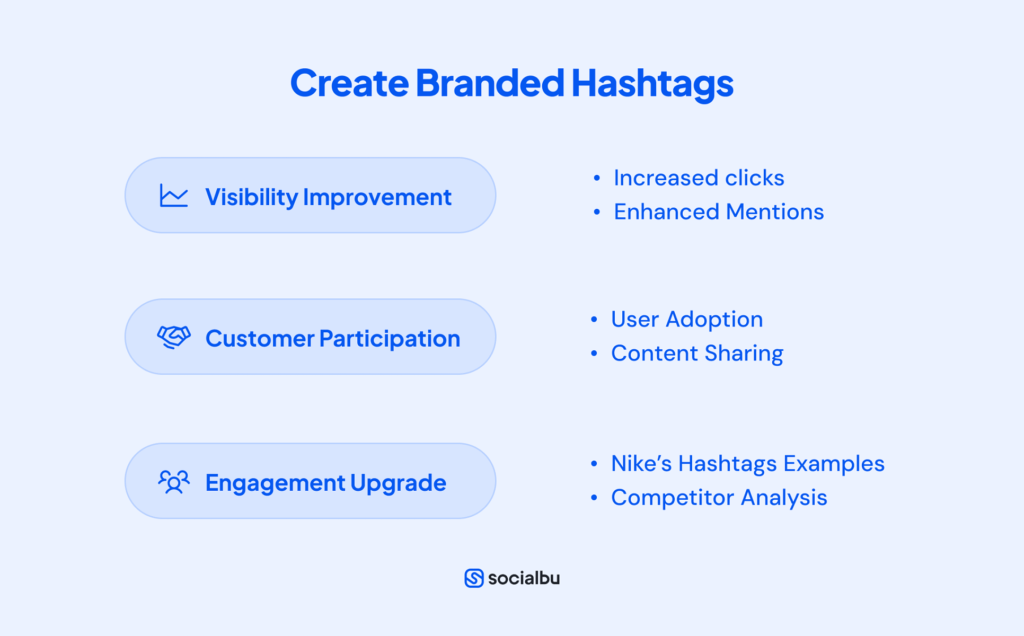
The most effective hashtag strategy is to create a customized hashtag. Branded hashtags improve visibility, clicks, mentions, and total reach and encourage the audience to use them.
For example, Nike’s Instagram hashtag strategy involves using branded tags such as #nikefc, #nikewomen, and #justdoit and encouraging customers to post about their content using the same tags.
Using the correct combination of popular and brand-specific hashtags maximizes exposure and interaction.
3. Monitor and Report on the Growth of Your Hashtags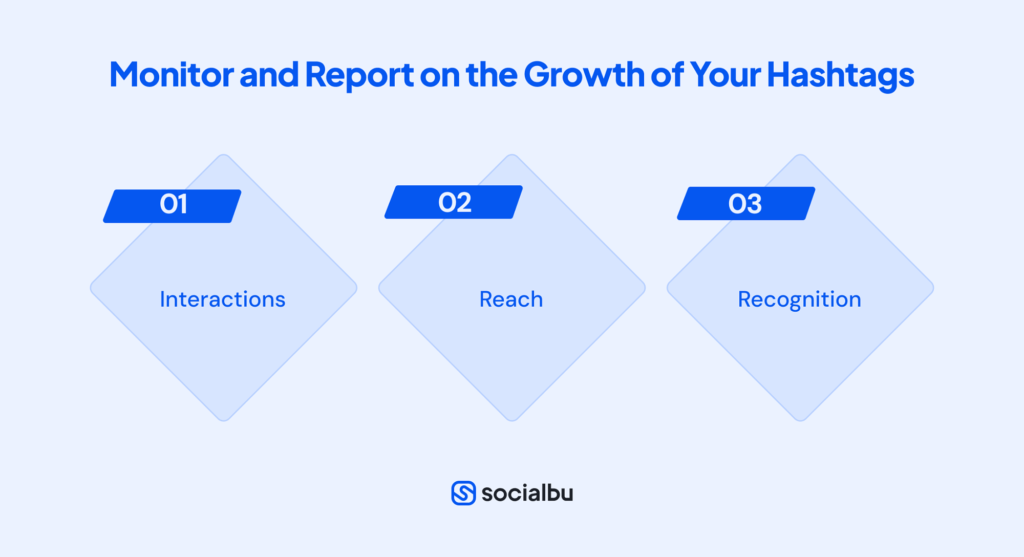
Keep an eye on the performance of your social media hashtags by checking the insights you can provide. See which hashtags are generating the most reach, impressions , and engagement
Review insights and analytics to monitor the performance of your hashtags. Identify which hashtags have the highest reach, impressions, and interaction.
Regularly monitor critical metrics, including:
- Reach: How many people see the hashtag you’ve used?
- Interactions: How many people engage (like, share, or comment) on hashtag posts?
- Recognition: How many people are familiar with the hashtag?
4. Use the Right Number of Hashtags
Another proper use of hashtags is using the right number. Social media platforms such as Instagram allow up to 30 hashtags per post, but that doesn’t mean you should use them all.
Using too many hashtags can backfire and decrease engagement. Therefore, Aim for 3-5 relevant hashtags per post and include a mix of general and specific hashtags.
5. Capitalize on Trends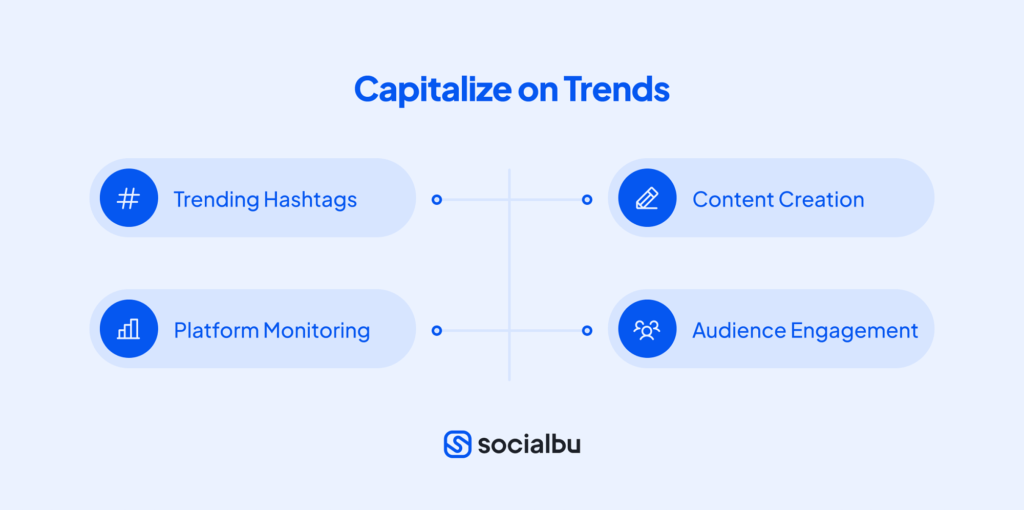
One of the best practices for hashtags is highlighting social media trends. Capitalizing on trending Instagram Hashtags and creating entertaining content for your audience without being overly commercial is a win-win situation.
Trends will also appear on other social media platforms, so look for ones that resonate with your hashtag strategy.
Advanced Hashtag Tactics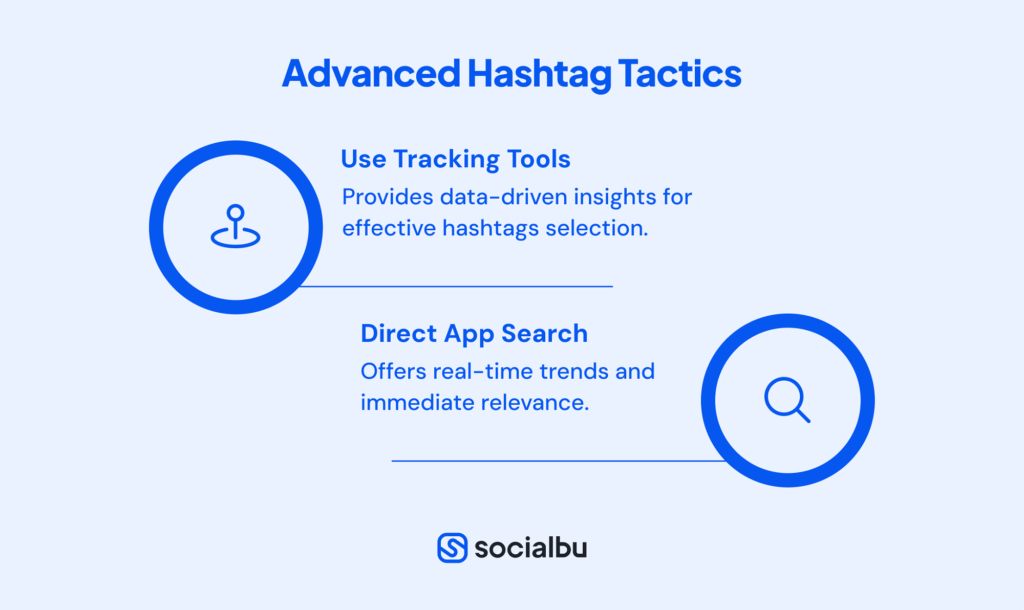
Hashtags are effective, but they are not a magic bullet. Using hashtags will not do the trick. You have to go a little deeper to fully understand the specific nuances of social platform hashtag implementation.
Here are some advanced tactics to elevate your hashtag strategy:
Research Trending Hashtags
Using trending hashtags is a good way to develop new ideas. It also allows your brand to be part of a bigger picture and engage with others.
So, how do you find trending social hashtags in your niche? It could begin hashtags by tracking a tool or searching for trending and most appropriate hashtags on various apps. Use these hashtag types for inspiration:
- Niche-specific hashtags: #SustainableFashion, #ArtificialIntelligence, #Foodie
- Event-specific hashtags: #NewYear2025, #EidMubarak, #Christmas
- Motivational hashtags: #MotivationMonday, #Inspiration, #Positivity
- Trending hashtags: #TrendingNow, #Viral, #Popular
- Seasonal hashtags: #WinterVibes, #SummerFun, #AutumnLeaves
For instance, when using hashtags on social media platforms such as Instagram, you can check the Explore page to see which posts are gaining recognition. Pay attention to their hashtags and take this opportunity to trend your brand.
Review Your Competition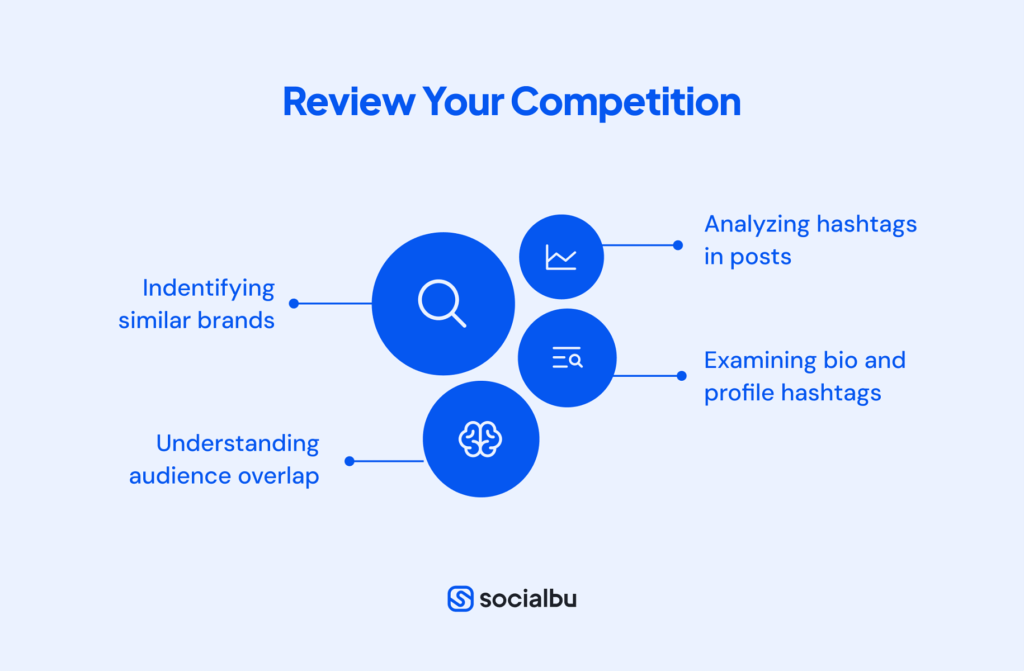
Another great hashtag strategy is to learn about your competitors’ online strategies. This will help you find content-related hashtags.
First, a competitive analysis of social media will be conducted. This will help you identify brands that offer similar products and services, cater to the same audience, and have a similar brand identity. Then, analyze the hashtags they use in their posts and their bio or profile description.
Look for common trends or topics related to your brand. Analyze the level of engagement on their posts and shortlist hashtags with which you can share.
In addition, one of the hashtags’ best practices is monitoring the performance of competitor hashtags used in your posts. Hashtags that work for your competitors may not work for your brand.
Social Listening With Hashtags
Think of hashtags as conversation starters. By following relevant hashtags, you can gain valuable insights into what your audience is interested in and talking about. Social listening allows you to adjust your material to their needs and encourage meaningful conversations.
In addition, social media management tools such as SocialBu can identify relevant conversations by tracking keywords associated with your brand.
Monitoring these conversations allows you to learn what hashtags your target audience uses and what topics they are interested in.
Use SocialBu to Analyze Hashtags
SocialBu allows you to analyze hashtag analytics for multiple platforms in a single location, saving you time compared to running analytics directly on each app.
The social media management tool lets you track your frequently used hashtags and those that receive the most engagement. This helps you determine which to use to maximize your reach and engagement.
Wrap-up
Using Instagram hashtags can boost brand exposure, engagement, and competitor monitoring. Before using hashtags, you should understand the different types and some best practices to follow. You can unlock their full potential by understanding the various types of social media tags.
Need help deciding which hashtags work best for your brand? Use SocialBu to analyze hashtags from a single dashboard. Sign up for a free trial today.
FAQs
What is a social tag?
A social tag is a word or short phrase used in social networks to tag the content and make that information accessible to people interested in this topic.
What are examples of social tags?
Social tags include hashtags, identification keywords, or phrases marked by a hash symbol. Some examples include #baking, #travelphotography, #sustainability.
How do I find my social media tags?
There are several ways to find social media tags:
Use a platform’s built-in search function
Analyze hashtags your competitors use.
Explore trending hashtags on the “Discover” page (Instagram) or similar features on other platforms.
What is the difference between a tag and a hashtag?
A social media tag (hashtag) categorizes content publicly using the Hash (#) symbol. A tag can also mean tagging a person (@username) or adding a geographical location to a picture (place tag).

